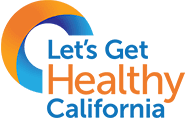How can we improve access to services that support health and enhance quality of life for Californians?
What drives Access to Services?
Access to services involves making sure that people who need them have the ability to take advantage of the full range of community services – health services, education, human services, recreation, the arts, etc. – that contribute to high quality of life in a community.1 This includes access to the information, tools and resources required to effectively participate in those services and systems.1
Inequities in access to these services can impact health outcomes.2 The expense, difficulty, and distance to reach needed services can be obstacles. Transportation and location can also be barriers to accessing services. Preventing long waits for services, providing materials that are easy to understand, and simplifying forms and phone systems can all increase opportunities for individuals to more effectively obtain services.2 It is also important that services be culturally appropriate and made available in a language the client can understand.1,4
Quick Facts
- The way our communities are designed affects access to services. Neighborhood design and availability of safe transportation options to connect housing, educational facilities, places of employment and essential services (including grocery stores, banks, health services, libraries), can support access.3
- Experiences of discrimination create barriers that directly prevent access to services, and contribute to a lack of knowledge of how to navigate service systems.4
The Opportunity
How can we reduce barriers and resolve gaps in access to services? How can we more effectively address the needs of underserved populations?
A user-centered approach to developing services involves the “build with, not for” approach.1 When organizations involve the population that they intend to serve, strategies are informed by the experience of communities and can leverage greater understanding of their strengths and assets, needs, culture, context, politics and history.6 The schedules, locations, and structures of services can be adjusted to best meet the needs of those they’re meant to reach.1 Social connections and networks between residents are used to transmit information about how and where to access care.2
What’s being done?
Here are just a few examples of efforts underway at the state and local level to address this issue:
State Efforts
California Reducing Disparities Project (CRDP)
The California Reducing Disparities Project (CRDP) is issuing grant funds to help reduce mental health disparities in communities that have traditionally been underserved. The funding will be distributed to 11 pilot projects statewide that provide mental health services to five target populations, including African American, Asian and Pacific Islander, Latino, Lesbian, Gay, Bisexual, Transgender, Queer and Questioning (LGBTQ), and Native American communities. The primary goal of these projects is to validate community-defined evidence-based practices through rigorous evaluation. Each organization receives six months of technical support to develop a scope of work, detailed five-year budget, and an evaluation plan.
Local Efforts
Medical-Legal Partnership for Seniors
California’s lower income older adults can be vulnerable due to their diversity of language, ethnicity, and culture, which inhibits their ability to access available services. The Medical-Legal Partnership for Seniors provides legal assistance to lower income adults assisting them with health and financial advice, as well as advance care planning. Through a partnership between UCSF Medical Center’s Geriatric Programs and UC Hastings College of Law, eligible seniors obtain free one-on-one legal advice and education on a variety of issues. Meanwhile, law students gain valuable experience while providing assistance to this underserved population. In addition to support with legal issues, law students are trained to identify conditions impacting social determinants of health for participants and provide linkages to resources that address those needs. Students assist seniors with completing applications, addressing consumer rights and housing matters, and sign up for meal delivery programs, depending on the patient need.
Check out even more in the Innovation Challenge Showcase.
Links and Resources
- Let’s Get Healthy California
- CHHS Open Data Portal
Footnotes
- University of Kansas. (2016) Overview of Tactics for Modifying Access, Barriers, and Opportunities. The Community Tool Box, from https://ctb.ku.edu/en/table-of-contents/implement/access-barriers-opportunities/overview/main
- Derose, K.P., Gresenz, C.R., Ringel, J.S., (October 2011) Understanding Disparities In Health Care Access—And Reducing Them—Through A Focus On Public Health. Health Affairs. October 2011 vol. 30 no. 10 1844-1851, from https://content.healthaffairs.org/content/30/10/1844.full
- Bay Area Regional Health Inequities Initiative (BARHII). (Dec 2015) Healthy Planning Guide. BARHII.org. From https://barhii.org/download/publications/healthy_planning_guide.pdf
- Bay Area Regional Health Inequities Initiative. (Nov 2013) Health Equity and Community Engagement Report. BARHII.org, from https://barhii.org/download/publications/hecer_regionalsummary.pdf
- Bay Area Regional Health Inequities Initiative.( 2015) Applying Social Determinants of Health Indicators to Advance Health Equity: A Guide for Local Health Department Epidemiologists and Public Health Professionals. Oakland, CA. https://barhii.org/resources/sdoh-indicator-guide
- Bezold, C., Liburd, L., et al. (2006) Recommendations for Future Efforts in Community Health Promotion. Centers for Disease Control, from https://www.cdc.gov/chronicdisease/pdf/community_health_promotion_expert_panel_report.pdf

